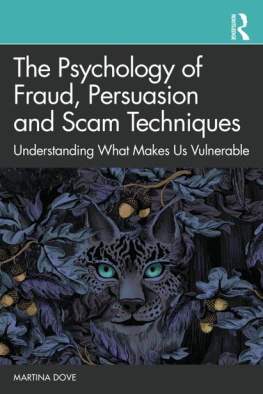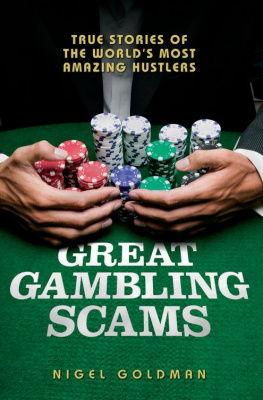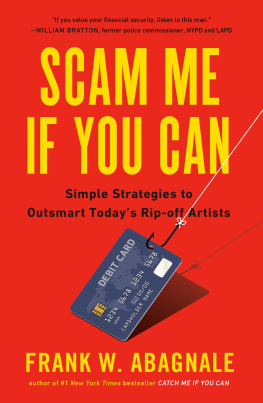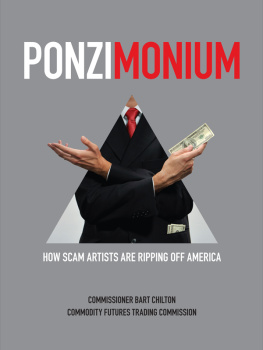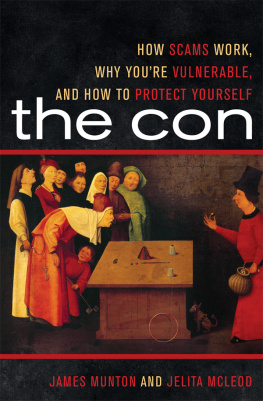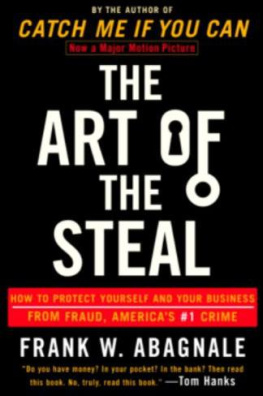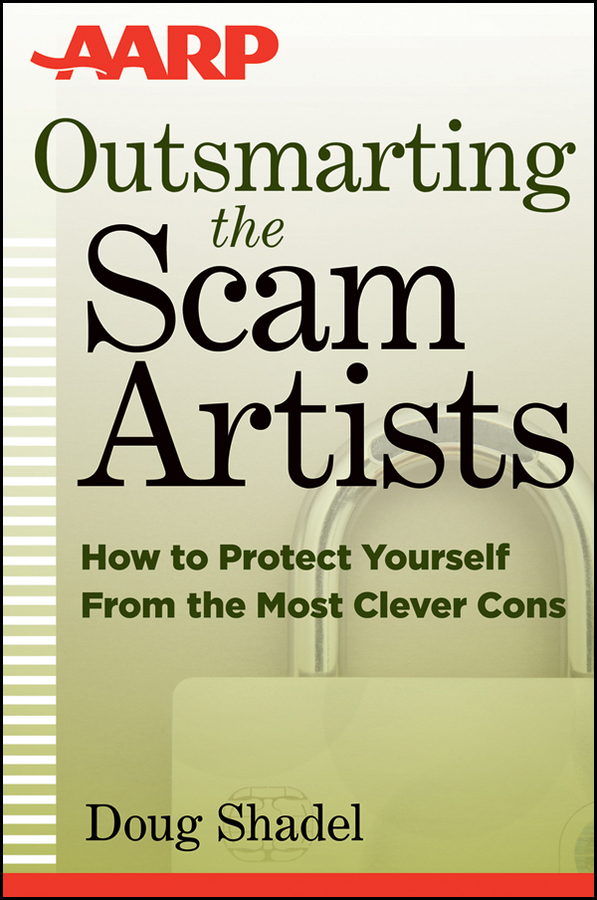Contents

Copyright 2012 by AARP. All rights reserved. AARP is a registered trademark.
Published by John Wiley & Sons, Inc., Hoboken, New Jersey.
Published simultaneously in Canada.
No part of this publication may be reproduced, stored in a retrieval system, or transmitted in any form or by any means, electronic, mechanical, photocopying, recording, scanning, or otherwise, except as permitted under Section 107 or 108 of the 1976 United States Copyright Act, without either the prior written permission of the Publisher, or authorization through payment of the appropriate per-copy fee to the Copyright Clearance Center, Inc., 222 Rosewood Drive, Danvers, MA 01923, (978) 750-8400, fax (978) 646-8600, or on the Web at www.copyright.com . Requests to the Publisher for permission should be addressed to the Permissions Department, John Wiley & Sons, Inc., 111 River Street, Hoboken, NJ 07030, (201) 748-6011, fax (201) 748-6008, or online at www.wiley.com/go/permissions .
Limit of Liability/Disclaimer of Warranty: While the publisher and author have used their best efforts in preparing this book, they make no representations or warranties with respect to the accuracy or completeness of the contents of this book and specifically disclaim any implied warranties of merchantability or fitness for a particular purpose. No warranty may be created or extended by sales representatives or written sales materials. The advice and strategies contained herein may not be suitable for your situation. You should consult with a professional where appropriate. Neither the publisher nor author shall be liable for any loss of profit or any other commercial damages, including but not limited to special, incidental, consequential, or other damages.
For general information on our other products and services or for technical support, please contact our Customer Care Department within the United States at (800) 762-2974, outside the United States at (317) 572-3993, or fax (317) 572-4002.
Wiley also publishes its books in a variety of electronic formats. Some content that appears in print may not be available in electronic books. For more information about Wiley products, visit our web site at www.wiley.com .
This and other AARP books are available at AARPs online bookstore, aarp.org/bookstore .
Library of Congress Cataloging-in-Publication Data:
Shadel, Doug, 1957
Outsmarting the scam artists : how to protect yourself from the most clever cons / Doug Shadel.
p. cm.
Includes bibliographical references and index.
ISBN 978-1-118-17364-0 (pbk.); 978-1-118-22702-2 (ebk); 978-1-118-24007-6 (ebk); 978-1-118-26467-6 (ebk)
1. FraudPrevention. 2. Swindlers and swindling. I. Title.
HV6691.S42 2012
613.6dc23
2011050802
This book is dedicated to the hundreds of public servants and volunteers who have devoted their lives to fighting fraud in all its forms .
Acknowledgments
I would like to thank the following individuals for their contributions, directly or indirectly, to this book: Scott Adkins; Emily Allen; Lona Choi-Allum; John Barnett; Crystal Tolbert Bell; Dan Bolick; Joe Borg; Alan Buie; Elliot Burg; Bruce Carlson; Kathi Brown; Laura Carstensen; Pat Cashman; Rachelle Cummins; Martha Deevy; Shari Delaney; Jimmy Edwards; Rob Ence; Jason Erskine; John Gannon; Lois Greisman; Chuck Harwood; Bill Hessle; Kathryn Holguin; Sally Hurme; Christine Kieffer; Melodye Kleinman; Dan Lord; Erin Leahy; Jodi Lipson; Ellyn Lindsey; Shoshana Lucich; Jean Mathisen; Greg Marchildon; Ingrid McDonald; Rob McKenna; Amy Nofziger; Nanna Notthoff; Karla Pak; Anthony Pratkanis; Jennifer Sauer; Susanne Schiebe; Lori Schock; Mike Schuster; Emily, Nick, and Renee Shadel; Bridget Small; Chris Raaum; John Risjman; Terri Thome; Doug Walsh; Gerri Walsh; Cheryl Weber; and Lee White.
PREFACE
The Big Myth about Fraud
Anyone who has spent time giving talks in the community about how to avoid fraud encounters a common reaction: This is all well and good for other people, but Im too smart to ever fall for one of these scams.
People who make such comments havent met Dave Benson, a highly successful businessman who retired in 2002 with a nest egg of more than $2 million dollars. Two years later, he had lost nearly $650,000 of it to an oil and gas scam out of Dallas, Texas.
They also havent met Steve Johnson, a 20-year veteran stock-broker who got to age 58 and saw that his 401(k) was not sufficient to pay for his retirement, so he started investing in high-risk investments like rare stamps, stock options, and oil and gas units. He eventually lost $75,000.
And then there was Allen Jennings, a college professor at the University of California with a PhD in organic chemistry who lost $800,000 to a series of movie scam investments operating out of Hollywood, California.
The list goes on. Research conducted by AARP and the Financial Industry Regulatory Authority (FINRA) Foundation found that investment fraud victims had more education, earned more, and were more financially literate than the general population. Many victim lists look like a whos who of American business.
So why are so many people in denial about their own susceptibility to this crime? Part of it is human nature. Health psychologists long ago identified something known as the illusion of invulnerability. This is the human tendency to under estimate ones own chance of getting a serious illness and it is a major barrier to changing ones behavior. For if a person thinks, as apparently many do, that other people get cancer, but I wont, they will never take any steps to avoid it. The same illusion holds true for becoming a fraud victim. If you dont think you will be taken, you wont take steps to avoid it.
One goal of this volume is to convince the reader that anyone, no matter how intelligent or successful, can be taken given the right circumstances and the right con man. You will see numerous examples in these pages of extraordinarily sharp business people who fell prey to the sophisticated psychological tactics con men employ.
The New Frontier: Emotion and Persuasion
New research has uncovered the two primary tools con artists employ to defraud victims: heightened emotions and persuasion. With regard to emotions, the con artists first order of business is to get the victim into a heightened emotional state known as ether. The con artists all believe that heightened emotions make it easier to push the target into a poor decision because they are less able to access the thinking part of the brain and raise objections based on logic and reason. Social scientists have known for years that not only do we make poor decisions when we are in a heightened emotional state, but we are also notoriously poor at realizing how much influence such emotions have on our decisions. This suggests that fraud prevention efforts should include information about the impact of emotion on decision-making.
Another key tool employed by con artists is persuasion. Researchers have discovered that while new scams arise everyday, the underlying persuasion tactics employed in those scams remain fairly constant. They have also discovered that fraud victims are less able than the general public to spot persuasion tactics used by con men. Thus, an emerging new strategy in the fight against fraud is to teach people the persuasion tactics used in all scams. And as we describe in Chapter 13, there is growing evidence that such prevention tactics are effective.
Targeting Vulnerable Populations


